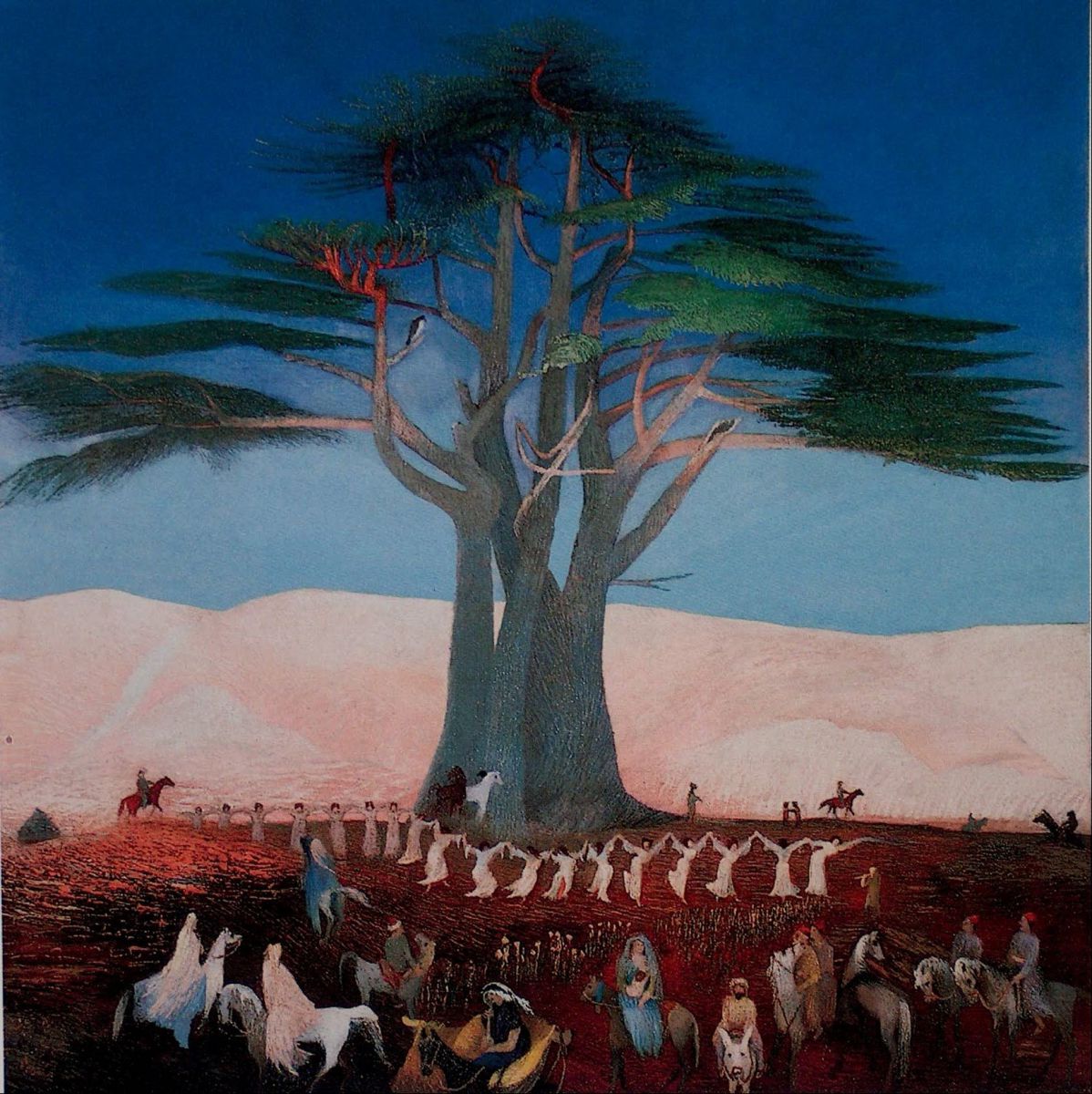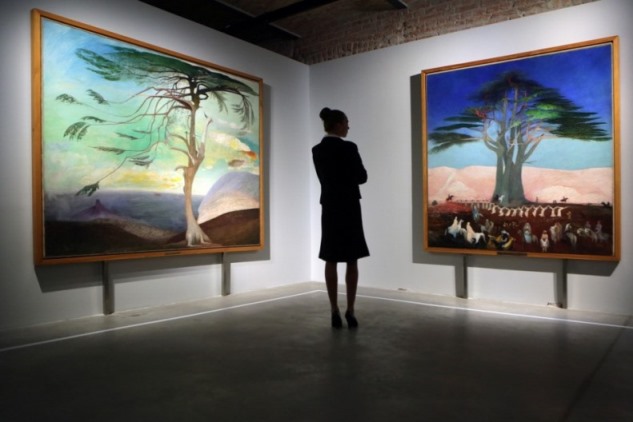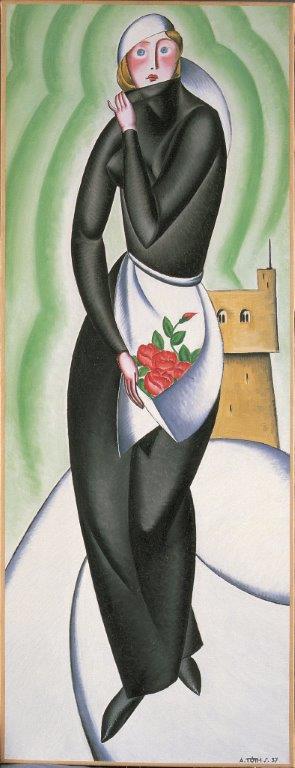Lonely Cedars
Age-old cedars defy weather and wind, standing proud and majestic. They offer orientation to generations of people passing by. They are weather-beaten yet strong and healthy. Even nature seems to underline the beauty of these ancient creatures with an impressive light show. They depict mystical resoluteness, strength, something everlasting. I feel drawn to these two paintings, they enthuse me. How is that?

Insight and motivation nestle and develop in a human being from an early age. Sometimes you recognize the influences if you look back on your life; how you developed in a certain direction and how this was confirmed later on. As a child I read the grand stories of world literature in our library at home, while I listened to the many discussions around me about extraordinary works of art. I also had several workbooks on visual art, among others a memory scrapbook. Within that book were a few images which made a lifelong impression on me. Decades later two of these striking images were exhibited next to each other and I had the opportunity to go and see them. Early in 2016 I was in Budapest during the oeuvre exposition of the Hungarian painter Tivadar Csontváry Kosztka. For me it was an obligatory pilgrimage.

These are two breathtaking trees of life. One is a solitary giant. The other, surrounded by pilgrims, seems to be even larger than the distant mountains. Weathered branches offer shadow and seem to fight the elements at the same time. For me, they stand there as metaphors for a life well lived, rooted in the source of life. The compositions are very powerful as to form and colour. Closer examination reveals splendid details. Both trees are painted with fine and rich colour transitions and contrasts, with a subtle handling of the brush. Earthly browns and heavenly blues are linked with pink light, as if it is dawn in the evening. The pinkish element in the middle suggests a transition between heaven and earth, the tree acting as the link. An eagle sitting on one of the branches and other bird associations suggest this connection as well. And all this is pictured in an all-embracing harmony of peace and motion.
The first tree, the lonely cedar, has been discussed in art history as a self-portrait of Csontváry. Ages seem to pass by the mythical tree of life, the other cedar standing in the midst of horsemen and dancing women in a dreamlike surreal atmosphere. As for me, the ‘yarn and threads’ of these paintings have become a motif in the texture of my life. Intuitively I connect to people who remind me of such cedars. And, indeed, I long to become one myself.
My ears are filled with the sounds of promise:
“Good people will prosper like palm trees,
Grow tall like Lebanon cedars;
transplanted to God’s courtyard,
They’ll grow tall in the presence of God,
lithe and green, virile still in old age.”
Such witnesses to upright God!
(Psalm 92:13-15, The Message)
Tivadar Csontváry Kosztka: Lonely Cedar (Magányos cédrus), 1907, 194 x 248 cm, Janus Pannonius Múzeum, Pécs, Hungary.
Tivadar Csontváry Kosztka: Pilgrimige to the Cedars in the Lebanon (Zarándoklás a cédrusokhoz Libanonban), 1907, 200 x 205 cm, Magyar Nemzeti Galéria, Budapest, Hungary.
This blog was an ArtWay Visual Meditation 19 June, 2016.

